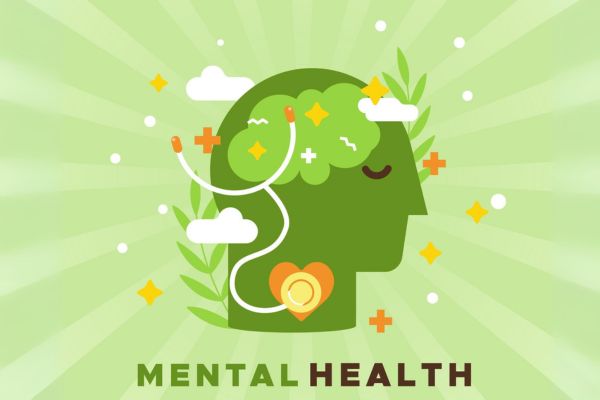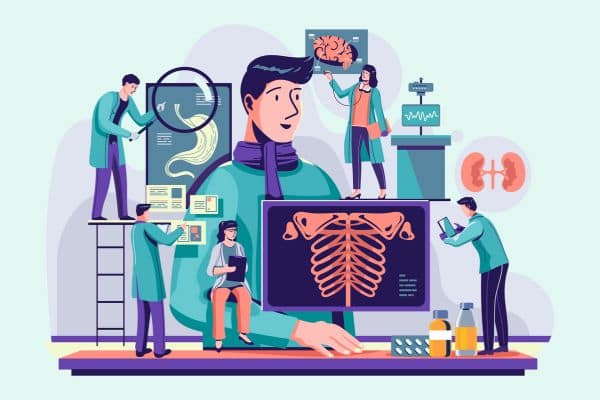“The answer to the question managers so often ask of behavioural scientists, ‘How do you motivate people?’ is, you don’t.” – Douglas McGregor
You don’t, and you cannot motivate people. All you can do is create or develop stimulants that promote the existing motivation. This is because inspiration comes from within a person.
However, external factors, including incentives and the environment, impacts motivation significantly. Usually, motivation results from satisfaction and the need for development.
The improvement of cognitive and biological aspects such as mental health, emotional feeling, beliefs, and wellbeing impacts physiological arousal, leading to the urge to perform a given task – motivation. On the other hand, the environmental and social factors influence motivation significantly.
In workplaces, motivation is highly valued (it is considered a key to productivity), and hundreds of financial incentives motivate employees.
What role mental wellness play in the organisation? Do most employers and workers neglect and overlook the benefits of improved mental health – one of the core sources of motivation. Let’s look at answers for some of the following questions:
What are the benefits of mental health in the workplace?
Why is mental health in the workplace important?
Why is it considered a core source of motivation?
Before diving into discussing mental health in workplaces, let’s look at the fundamentals of mental health.
What is Mental Health at Workplace?
Mental health refers to cognitive fitness. That is, the brain’s alertness and ability to reason, remember, learn, plan, adapt, and ability to deal with situations, emotions, and stress. It is not merely the absence of brain illnesses but also the ability to manage different positions and perform everyday actions effectively. Mental health can be quantified by an individual’s ability to establish, maintain, and or improve his productivity, interactivity, and sociability.
The World Health Organization and various health promotion conferences like Ottawa Charter continue to advocate for better mental and physical human health. These organisations and conferences have set and are promoting guidelines and policies such as a healthy public policy that promote human health.
Why is Mental Health Important?
“Without mental health, there can be no true physical health.”
The quote by WHO’s first director-general (1948 to 1953), Dr Brock Chisholm, links mental health with general wellbeing. Dr Brock Chisholm believed that you could not control physical health conditions without eradicating mental health conditions. Years later, after the doctor’s proclamation, researchers have realised strong evidence elucidating the relationship between mental health and physical health. Mental problems such as depression and anxiety, for example, are linked with most non-communicable, killer diseases such as heart attack, cancer, and others.
Researchers conclude that treating mental health conditions can lower mortality and re-hospitalisation rates significantly. In addition to that, Mental health is subjective to all aspects of human life. Psychiatrists and other professionals view mental health as a resource of living. Researchers suggest that altering an individual’s mental health can significantly impact a person’s life. Ensuring a healthy mind is an investment in an individual’s wellbeing.
How Do You Improve Your Mental Health?
While various factors impact mental health differently, you need to establish the factors that jeopardise your health to improve it. Next, devise ways of overcoming these factors. Different factors are grouped into three categories; economic, social, and biological factors.
Economic factors – are related to financial aspects such as unemployment, low income, and bills.
Social factors – they are society-related factors such as procrastination, isolation, discrimination, grief, among others.
Biological factors – are factors such as food, sex, diseases, lifestyle, drug, and substance use.
These factors influence our mental health differently. You can overcome these factors and improve your mental health through physical activities, exercising healthy living, learning how to deal with grief and stress, and therapies.
Let’s now discuss mental health in the workplace.
Mental Health in Workplace
Work is one of the essential factors that can improve mental health significantly. It provides a sense of purpose and identity. Also, work offers a better source of financial freedom hence lowering the risks of mental health conditions resulting from economic factors. To be precise, work is a vital element for fighting mental issues such as stress.
On the other hand, work is one of the leading yet less recognised causes of mental problems.
Work is sometimes demanding and requires much time, energy, and a lot of concentration. Thus, it becomes challenging to balance life and work. As a result, employees become prone to mental conditions such as anxiety, stress, and depression. Moreover, working conditions –environment and organisation issues in the workplace can impact mental health significantly. Work has also been denoted as a leading cause of aggravation of mental illness in people living with mental problems such as bipolar disorders. However, due to unfavourable economic waves, most employees tend to hide their feelings, and thus the symptoms of mental health issues go unnoticed, let alone treatment. Usually, mental health issues impact both the victim – affects career, relationships, and physical health – and the company in the ROI.
According to researches, about 76% of United States employees do experience mental health issues every year. Unfortunately, only a quarter of victims feel comfortable seeking help and or ask for a mental health day. A study by WHO concludes that the global economy loses about $1trillion every year in lost productivity due to mental health issues.
What are the Common Mental Health Problems in Workplaces?
The common psychological issues in the workplace include depression, anxiety, and stress.
- Depression
This is the most common mental health issue in society today. However, it prevails more in the workplaces, in almost all industries. Most researchers suggest that about 6% of employees experience depressive episodes every year. Depression is characterised by sadness, fatigue, loss of interest in most activities, and lack of energy. Extreme depression leads to insomnia and other severe mental health problems.
- Anxiety –
This is the other well-known mental health condition in society. Studies suggest that about 6% of the general United States population experiences anxiety attacks every year. In workplaces, stress manifests as panic attacks. It is common in the entertainment, arts, and hotel industries.
- Work-related stress
Stress is the other condition common in the workplace. It is a pattern of mixed emotions, cognition, and physical problems, usually resulting from excessive psychological arousal. Sometimes, stress is not considered a mental health issue. However, extreme stress may result in burnout, anxiety and other severe conditions.
Other mental health problems common in the workplace include Attention Deficit Hyperactivity Disorder (ADHD), bipolar disorders, Psychotic disorders, and mental retardation. Often, these conditions result from chronic stress and depression. Learn how you may manage your stress before it starts directing your health.
Read our blog: “5 Effective Mindfulness Techniques to Reduce Workplace Stress”
Why is Workers Mental Health Important?
Worker’s mental health has a significant impact on individual workers and companies.
Importance of Mental Health to an Individual Worker
– Mental health has a close relationship with other Physical conditions – WHO and other researchers link mental health with almost all other non-communicable diseases. In addition to that, mental health is viewed as the leading cause of most disabilities. Professionals suggest that mental health influences an individual’s resilience significantly. Therefore, treating mental health symptoms can lower the risks associated with most diseases such as heart attack.
– The indirect and direct cost of treating mental health issues is relatively higher than treating other diseases such as cardiovascular diseases. The direct cost refers to the budget associated with medication, physician visits, psychotherapy sessions, and hospitalisation. Indirect cost refers to the amount lost in income, time, and savings.
– Mental health also has a significant impact on the individual’s social life. While psychological issues affect cognitive fitness, they result in flawed reasoning and negative emotions that lead to socialisation problems.
Benefits of Mental Health in Workplaces
– Better mental health equals improved productivity and vice versa – WHO estimates that companies can expect a return of over $4 in every dollar spent eradicating mental health issues within the organisation.
– Mental health influences retention rate significantly – according to Hubspot’s 2018 Retention Report, about 77% of employees quit due to preventable reasons. One of the reasons among the avoidable causes is mental health-related. Additionally, the hiring and training costs exceed retention costs.
– The costs incurred by companies resulting from mental health issues exceed direct expenses on health insurance and pharmacy expenses. Therefore, ensuring better workers’ mental health helps in reducing unnecessary costs of treating psychological problems.
Are There Laws and Regulations that Ensure Mental Health in the Workplace?
The World Health Organization is among the leading organisations that advocate for better mental health, especially in workplaces. The WHO’s concern on health has led to developing principles and policies such as Mental Health Policy and Service Guidance Package that promote mental and physical health. The guide also directs the respective governments, health authorities, and nongovernmental agents on developing policies and comprehensive strategies to improve the public’s mental health.
Other standard codes and regulations that oversee mental health include Workplace Health and Safety Regulation (WHSR), Healthy Public Policy, and International Building Codes.
Workplace Health Safety Regulation (WHSR) – sets minimum safety standards for all workplaces. It also guides and educates employers and workers on eradicating and avoiding health hazards and other factors that impact mental and physical health.
International Building Codes – regulates and guides the construction process and ensures safe construction. It helps in eradicating health risks related to buildings and structures used as a working environment.
Healthy Public Policy – the policy advocates for a supportive environment for healthy living.
Conclusion
You are your company’s greatest asset. But you cannot be of any good without your greatest asset, which is your mental health. It is your responsibility to care for your health regardless of economic waves. Note that the cost of treating mental health issues can exceed your earnings. On the other hand, employers are obligated to make the workplace employees’ better place for transformation and innovation.
Read our blog: Building a Workplace Culture of Diversity, Inclusion, and Equity for Success
References
Harvard Health Publishing. (2020, June 17). Mental health problems in the workplace. Harvard Health. https://www.health.harvard.edu/blog/how-to-handle-stress-at-work-2019041716436
Mental health at work: policy brief. (n.d.). WHO | World Health Organization. https://www.who.int/publications/i/item/9789240057944
The economic costs of mental disorders: Do our societies react appropriately to the burden of mental disorders? (n.d.). PubMed Central (PMC). https://pmc.ncbi.nlm.nih.gov/articles/PMC5007565/?





















